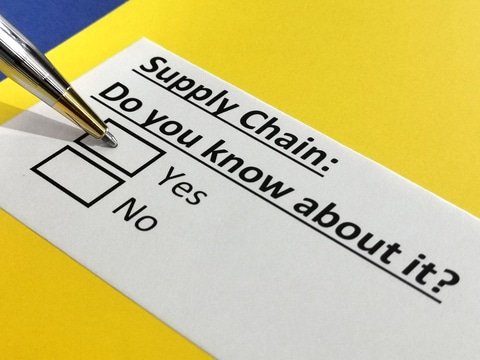Your Client’s Level of Expertise Will Guide Your Solutions
Supply chain consulting projects often tank during the initial discovery phase. Consultants assume their client knows about logistics, operations and supply chain dynamics.
Not true.
I’m an expert in supply chain. But don’t ask me about designing semiconductors or whether we should move from using silicon to decarbonized mashed potatoes.
I have no clue. I’m a 1-year-old in that arena.
Likewise, great CEOs, COOs, chief marketing officers and chief human resource officers might know little about supply chain. Even chief supply chain officers (CSCOs) have blind spots across the end-to-end supply chain.
What Is the Discovery Process in Consulting?
Supply chain consultants use the initial discovery process to collect crucial data and gather essential information. They look to understand the client’s current state and start diagnosing the real problem. This sets the foundation for the entire project, shaping future strategy and solutions.
But this is also where you assess your client’s supply chain maturity.
Are You Dealing with a CSCO or a 5-Year-Old?
As children grow, their knowledge and understanding grow. As you engage with your clients, their knowledge and understanding grows.
But you have to figure out your client’s level of supply chain expertise. This will influence your discovery process:
The 1-year-old: Imagine a toddler about to stick a metal wire into an outlet. You don’t ask Johnny where he’s going. You stop him and take the wire away.
For clients with a basic understanding of supply chain, sometimes direct intervention beats extensive explanations.
The 5-year-old: Now you explain the dangers in ways Johnny can understand. The outlet powers up cell phones and computers. “Johnny, if you stick that wire in that outlet, you’re going to get electrocuted.” You only stop him if he keeps going forward.
In consulting, this means simplifying explanations and guiding decisions more closely.
The teenager: Now, Johnny is 18 and working in the shop. He has plugged dozens of electrical cords into an outlet adapter. You don’t slap his hand. You say, “Hey John, you might want to watch those cords. An overloaded outlet might melt down and catch fire.”
This client has a better grasp of supply chain operations concepts but still might act recklessly. You need to monitor and correct. But you can encourage more independent thought.
The adult: Now you’re in the garage with 35-year-old John. John says, “Darn, I wish I had another extension cord. Could we invent something that helps this problem? What do you think, Dad? After all, you’re an electrical engineer.”
This is engaging with someone who has a mature understanding of supply chain management, maybe even supply chain strategy. Now you are in a collaborative process. You discuss problems and potential innovations as equals. The client understands implications and actively engages in strategizing.
Maybe the person across the table is a CSCO, if their organization has reached that maturity level. One can only hope.
Common Pitfalls in Supply Chain Consulting
Don’t expect your client to be an expert in supply chain resiliency, inventory management, global supply chain operations, everything supply chain.
This often leads to miscommunications and inadequate solutions. Tailor your approach to your client’s actual understanding level.
Consulting firms, supply chain or otherwise, seem to have a set of standard questions. Things like: “What keeps you up at night? Where is your pain? What problems are you having?”
Their answers are just the beginning. You still must discern the level of your client’s supply chain knowledge. And examine your client’s operations.
The Problem Was Not Inventory Management …
As an example, I once consulted for an apparel company. They had one warehouse in the Southeast and one in California.
The Southeast warehouse was full. They wanted to know if they could reconfigure operations to offload merchandise to their California facility, which had plenty of space.
An inventory management problem, right?
I went to the Southeastern facility and walked the building and I noted that half of the rack openings were empty.
I called my guy in New York and told him his building was not full. He said it was.
I said, “I’m in the building. This building is not full. Why do you think it’s full?”
He said both warehouses are 10,000 square feet. But the one in the Southeast stored twice the number of suits.
But what I saw indicated thousands of suits were missing.
What Happens When You Examine Business Operations
The next day, we inventoried the warehouse and compared it to company reports. We got down to a SKU-by-SKU search. The day before, the warehouse had “received” 10,000 suits. Those suits were not in the warehouse.
My guy said, “They’re there – I see them on the receiving report.”
I said, “I’m standing in the warehouse. Those SKUs are not here.”
In fact, that warehouse only had half the number of suits “in stock.”
Turns out, the people on the dock signed the receiving reports. Then they told some truck drivers to deliver the suits to the warehouse across town. The company didn’t have a second warehouse in town.
Instead of discovering a consulting gig, I discovered a crime. They were stealing the suits.
Find the Perfect Approach
I’m no longer directly involved in the consulting game. But I know how important a proper discovery process is. And I still know the best consultants around.
If you’re facing supply chain challenges and need guidance, reach out. I would love to make sure you find the perfect approach for your needs.
Because effective supply chain consulting requires more than just technical expertise. It demands a solid awareness of your client’s knowledge level and a tailored approach.
And you have to know whether you’re dealing with a 1-year-old or a fully grown adult.
Related Reading
- The New Era of Supply Chain Leadership: Tabled but Not Enabled
- The Chief Supply Chain Officer vs. the COO
- What About Supply Chain Strategy?
- Quod Erat Demonstrandum: Q.E.D. (Thus, It Is Proved)
Jim Tompkins, Chairman of Tompkins Ventures, is an international authority on designing and implementing end-to-end supply chains. Over five decades, he has designed countless industrial facilities and supply chain solutions, enhancing the growth of numerous companies. He previously built Tompkins International from a backyard startup into an international consulting and implementation firm. Jim earned his B.S., M.S. and Ph.D. in Industrial Engineering from Purdue University.






